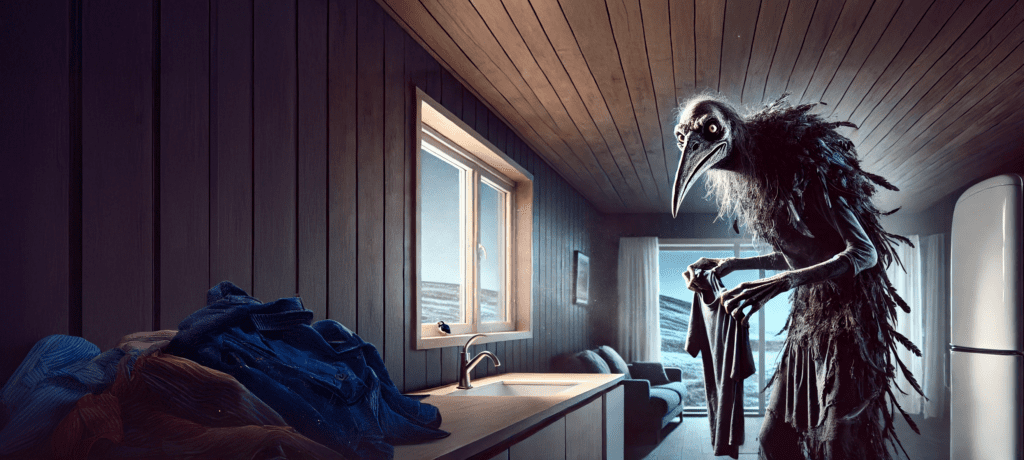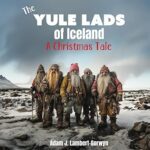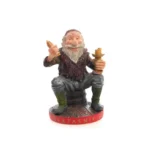Svitakrákur - Sweat Crow

“Svitakrákur slinked into homes under the cover of darkness, his long fingers searching for sweat-soaked clothes, eager to take what labor had left behind.”
Introduction
Svitakrákur, known as the Sweat Crow, is one of the forgotten Yule Lads, notorious for his peculiar obsession with the sweat-stained clothing of hardworking Icelandic laborers. Unlike the more mischievous antics of his brothers, Svitakrákur’s habits are unsettling. He lurks around homes after long days of work, searching for piles of laundry dampened by physical labor. His presence is symbolic of the toll winter labor takes on the human body, reminding people of the efforts required to survive the season. His name, derived from sviti (sweat) and krákur (crow), reflects his bird-like scavenging tendencies.
Historical Background and Earliest Known Reference
Svitakrákur’s earliest references in Icelandic folklore are tied to the physically demanding tasks of farm life. In old Icelandic society, the cold winter months required relentless physical work to maintain survival. Farmers and laborers often returned home with their clothes drenched in sweat, and Svitakrákur’s legend developed as a personification of the exhaustion that came with this hard labor. His story has been passed down through oral traditions and is referenced in Jólin Koma by Jóhannes úr Kötlum, where he is depicted as a sinister figure drawn to the evidence of human toil.
Physical Appearance and Clothing
Svitakrákur is described as lanky and gaunt, with an almost bird-like frame, matching his crow-like nature. His skin is pale and his fingers are unnaturally long, ideal for snatching garments from laundry piles. His clothing, ragged and worn, gives him the appearance of someone neglected, perhaps representing the toil that goes unnoticed. His beady eyes glint in the darkness, always searching for fresh, sweat-soaked clothes. He often wears a tattered cloak that allows him to blend into the shadows of winter nights.
Likes, Dislikes, and Habits
Svitakrákur thrives on the smell of hard-earned sweat. His greatest satisfaction comes from finding garments freshly soaked with sweat after a long day’s work. He is known to rifle through piles of laundry, searching specifically for clothes that are damp and worn from labor. His presence is a reminder of the inescapable nature of hard work during winter, where every effort could be reduced to nothing if one wasn’t careful. Svitakrákur despises clean, fresh clothing. Households that kept their clothes properly washed and dried frustrate him to no end, as there’s no scent of toil for him to savor.
Types of Pranks and Mischief
Svitakrákur’s pranks are more invasive than disruptive. He does not cause chaos or noise but quietly takes clothes soaked with sweat. Farmers and workers might wake up to find their laundry missing, stolen by Svitakrákur during the night. His thefts left workers scrambling to replace their garments, crucial for warmth and survival in the harsh winter months. Unlike the more playful Yule Lads, Svitakrákur’s pranks carry a darker, more burdensome undertone, representing how winter labor could be undone by unforeseen forces.
Relationship with Humans and Other Yule Lads
Svitakrákur’s relationship with humans is defined by the toll of labor. His presence highlights the physical cost of surviving Iceland’s winter months. He is not overtly malicious, but his quiet thefts of sweat-soaked clothing serve as a grim reminder of how hard work could be undone. Among his brothers, he is particularly drawn to Svitakrípa, who also has an affinity for the messes left by human activity, but while Svitakrípa focuses on more playful pranks, Svitakrákur’s obsession with labor adds a darker layer to his mischief.
Modern Depictions and Popularity
Svitakrákur remains one of the lesser-known Yule Lads in modern Icelandic folklore, but his character has taken on new significance in stories highlighting the challenges of winter labor. His quiet, eerie nature makes him less of a figure in children’s stories and more of a symbol of the arduous effort required to survive the long winters. His role as a harbinger of exhaustion has earned him a place in darker retellings of the Yule Lad legends.
Fun Facts and Trivia
- Svitakrákur’s name translates to “Sweat Crow,” referencing his crow-like scavenging for sweat-drenched clothes.
- He is one of the more symbolic Yule Lads, representing the burdens of winter labor rather than physical mischief.
- Svitakrákur’s obsession with labor makes him unique among the Yule Lads, many of whom engage in more playful pranks.
Astrological Sign: Virgo
Svitakrákur’s meticulous nature and focus on the results of hard work align well with the traits of Virgo. His careful search for sweat-drenched clothes mirrors Virgo’s attention to detail, and his preference for the product of labor highlights Virgo’s association with work and service.
Cultural Significance
Svitakrákur’s legend is a reflection of the toll winter takes on the body and mind. His presence in folklore reminds us of the harsh realities of survival, where every ounce of effort is precious, and even a small loss could mean the difference between life and death.
Voices of Tradition
“Svitakrákur læddist hljóðlega í gegnum nóttina, langir fingur hans leituðu að fötunum sem báru ilm erfiðis og svita.“




